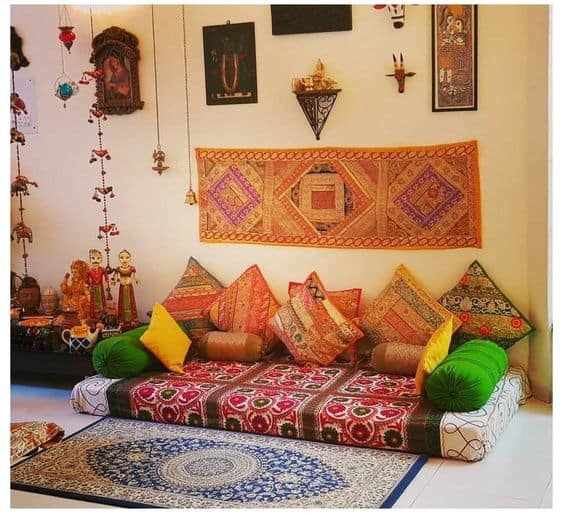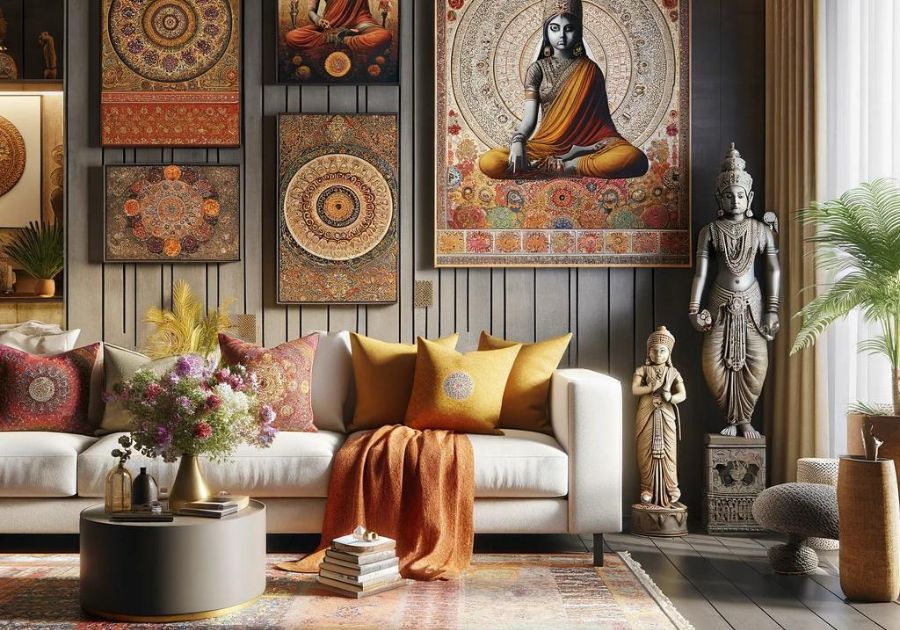When it comes to interior design, few styles can rival the charm and richness of traditional Indian home decor. Having grown up in a household that celebrated our cultural roots through decor, I have a deep appreciation for the unique elements that come together to create inviting and vibrant living spaces. In this article, we’ll dive deep into the world of traditional Indian home decor, exploring its various styles, essential elements, and how you can incorporate them into your modern home.
Understanding Traditional Indian Home Decor
Traditional Indian home decor is a stunning blend of art, history, and cultural symbolism. It reflects the local customs, festivals, and the diversity of India’s various regions. Whether it’s the intricate carvings of Rajasthan or the bold colors of Punjab, each style has its own unique flavor.
Key Features of Traditional Indian Decor
- Vibrant Colors: Rich, warm colors like reds, yellows, and greens are commonly used.
- Intricate Patterns: Traditional motifs and patterns, often inspired by nature, are prevalent.
- Natural Materials: Wood, clay, metal, and textiles are commonly sourced from local artisans.
- Handcrafted Elements: Many pieces are handmade, reflecting the craftsmanship of Indian artisans.
Popular Styles of Traditional Indian Home Decor
1. Rajasthani Decor
Rajasthan, known for its vibrant culture and heritage, offers a unique style characterized by colorful furnishings and intricate designs. Traditional Rajasthani decor often includes:
Essential Elements
- Brightly colored textiles (e.g., bandhani and block prints)
- Handcrafted wooden furniture
- Terracotta pottery and metal artifacts

Pros and Cons
| Pros | Cons |
|---|---|
| Vibrant and lively atmosphere | Can be overwhelming if overdone |
| Supports local artisans | Maintenance of wooden items may be required |
2. South Indian Decor
This style is known for its elegance and subtlety, often featuring serene colors and temple motifs. Key elements include:

Essential Elements
- Traditional brass and bronze figurines
- Kanjeevaram silk sarees used as upholstery
- Wooden carved pillars and furniture
Pros and Cons
| Pros | Cons |
|---|---|
| Creates a calm and peaceful environment | May lack the boldness some prefer |
| Timeless elegance | Limited color palette may not appeal to everyone |

3. Punjabi Decor
Known for its exuberance, Punjabi decor incorporates bold colors and patterns, making spaces look vibrant and cheerful. Key features include:
Essential Elements
- Phulkari embroidery
- Brightly colored wall art
- Sturdy wooden furniture

Pros and Cons
| Pros | Cons |
|---|---|
| Creates a lively and energetic space | Can be too loud for minimalistic preferences |
| Rich in cultural significance | Difficult to coordinate with other styles |
Incorporating Traditional Indian Decor into Modern Homes
Integrating traditional Indian decor into contemporary spaces can create a stunning fusion that celebrates both innovation and heritage. Here are some tips on how to achieve this balance:

1. Select Key Pieces
Choose standout items that reflect traditional craftsmanship, such as a beautiful wooden cabinet or a handwoven rug. These pieces can serve as focal points in your room.
2. Layer Textiles
Mix and match traditional textiles with modern ones. For example, use a Kanjeevaram silk throw over a contemporary sofa or layer Rajasthani block-printed cushions for added comfort.

3. Create Contrast
Pair traditional decor with minimalist furniture to create an interesting contrast. A traditional brass lamp on a sleek modern side table can enhance the aesthetic appeal of your space.
Common Elements in Traditional Indian Decor
Woodwork
Woodwork is a cornerstone of traditional Indian decor. From intricately carved furniture to wooden ceilings, the natural warmth of wood brings a sense of comfort.
Fabrics
Traditional fabrics, such as silk, cotton, and wool, are often used in upholstery, curtains, and table runners. The rich textures and colors of these fabrics can dramatically enhance the look of a room.
Art and Craft
Home decor is incomplete without art. From wall hangings to sculptures, incorporating traditional Indian art and craft can tell a story about your heritage.
Comparison: Traditional vs. Modern Indian Decor
| Aspect | Traditional Indian Decor | Modern Indian Decor |
|---|---|---|
| Color Palette | Vibrant and rich colors | Neutral tones with pops of color |
| Design Complexity | Intricate patterns and motifs | Simplistic and minimalistic |
| Material Usage | Natural materials (wood, clay, textiles) | Mixed materials (glass, metal, and composites) |
Personal Experience: Transforming My Home with Traditional Indian Decor
When I decided to redecorate my living space, I wanted to reflect my cultural background while maintaining a comfortable modern environment. I started by visiting local artisan markets to find unique wall hangings and furniture that told a story.
One of my favorite pieces is a carved wooden jhoola (swing) that now adorns my living room. It not only serves as a beautiful seating option but also becomes a conversation starter for guests. I paired it with vibrant, embroidered cushions and a colorful dhurrie (rug) that truly captures the essence of Indian culture.
Frequently Asked Questions (FAQs)
1. How can I start incorporating traditional Indian decor into my home?
Begin by selecting a few key pieces that resonate with you, such as textiles or handcrafted furniture. Gradually introduce these elements into your space.
2. What are some affordable ways to include traditional decor?
Consider DIY projects like creating wall art with traditional motifs or sewing cushion covers with Indian fabrics. Local markets often have affordable yet beautiful options.
3. Can traditional Indian decor work in small spaces?
Absolutely! Opt for multifunctional furniture, like a storage ottoman, and use mirrors to create a sense of space while still showcasing traditional decor elements.
4. Are there any maintenance tips for traditional Indian decor?
Regular dusting and avoiding direct sunlight are essential, especially for textiles. Wooden furniture may require periodic polishing to keep it looking new.
Conclusion
Traditional Indian home decor brings a sense of warmth, culture, and vibrancy to any space. By thoughtfully integrating these elements into your home, you can create a beautiful fusion of old and new that speaks to your personal style and heritage. Embrace the beauty of tradition and let it inspire your living space!